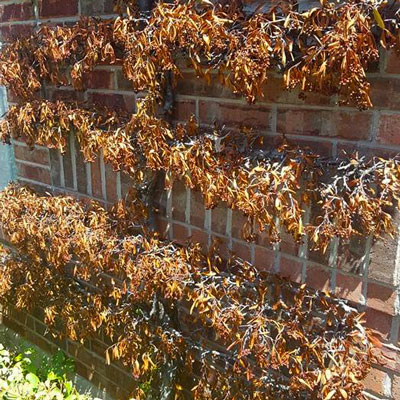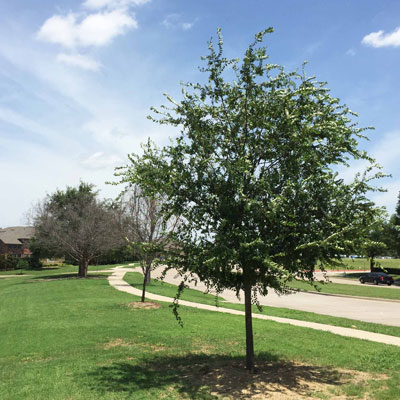Question of the Week Number 2: June 21, 2018
“Neil, what has killed this Bradford pear suddenly?”

Cotton root rot killed this Bradford pear within just three or four weeks in the alkaline black clay soils of Plano this month.
Why cotton is no longer grown in the Blackland Prairie…
There is a soil-borne fungus that is found in alkaline soils of Texas. Since one of its prime host plants has always been cotton, it’s been given the name of “cotton root rot,” but others know it as “Texas root rot.”
Either way, this disease is insidious. It lies dormant in our soils often for years. We plant our landscapes and gardens never knowing it’s present, and then suddenly without reason or warning, it rises up and kills them almost overnight.
Fact sheets I’ve seen from Texas A&M say that upwards of 80 percent of our cultivated plants are susceptible to cotton root rot to one degree or another. Plants that I see succumbing to it every year include cotton relatives (okra, hibiscus, rose-of-Sharon); fruiting and ornamental pears and apples; lacebark elms; and silver maples. However, the list goes on and on.
Plants that are very highly resistant or immune to it include grasses, hollies, oaks, junipers, crape myrtles and nandinas.
To learn more…
Here is an outstanding publication from Texas A&M. It gives a great deal of information and a much more comprehensive listing of plant susceptibilities. Even though it was published years ago by two of my friends, every word is still accurate.

Pyracantha espalier that took years to train was lost to cotton root rot in just a matter of weeks.

Several lacebark elms in this row have already died. This is a common sight. One tree will die one year, then the next, then the next.
Critical facts…
There are no preventive products, nor are there any cures for cotton root rot.
Your best means to avoid losing plants to it would be to plant species you know to be resistant to it. If you decide to try types that might be susceptible, and if you’re in an area where it could be a problem, do all that you can to acidify the planting soil ahead of time. Add organic matter generously and apply sulfur soil acidifier.
